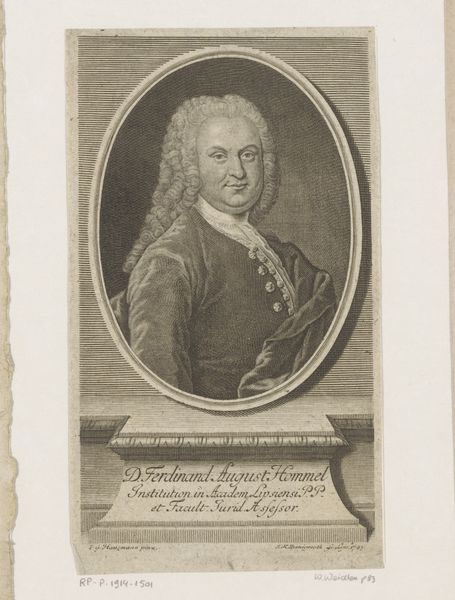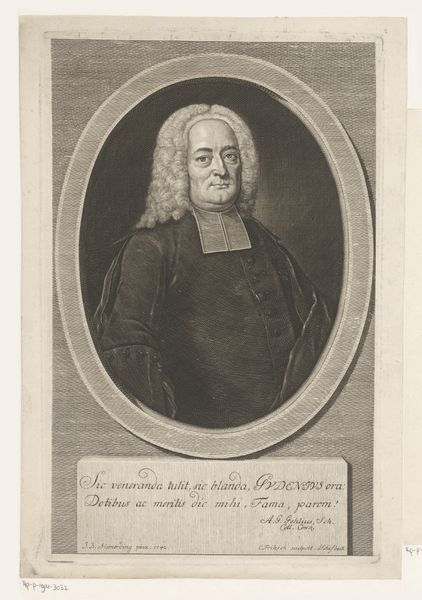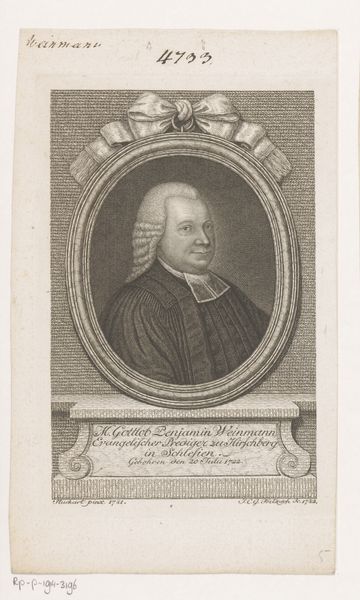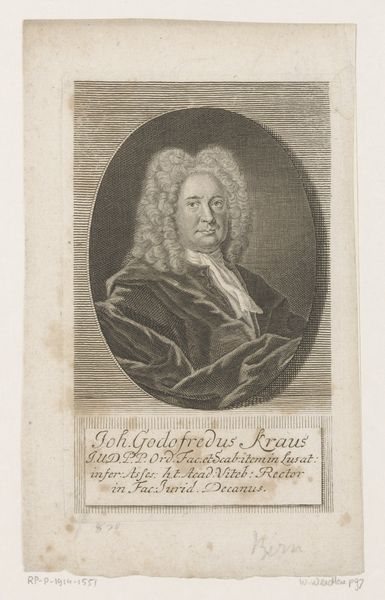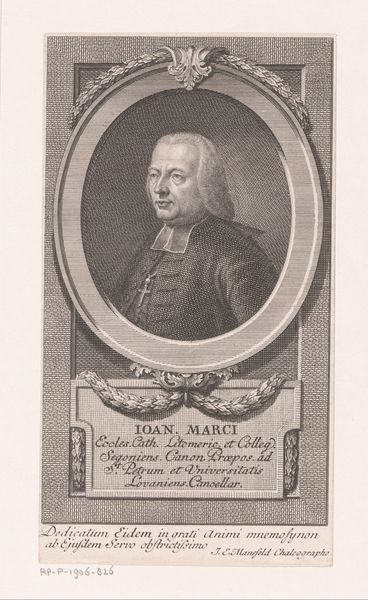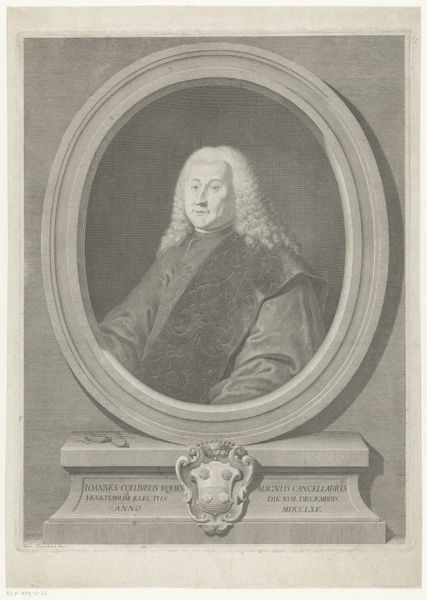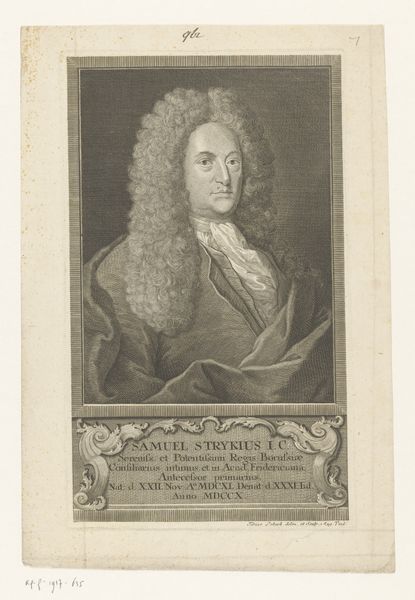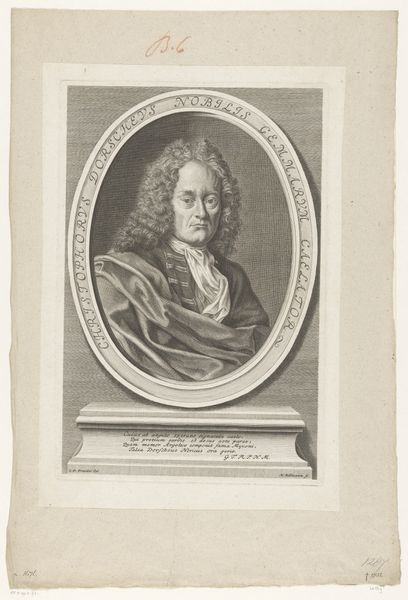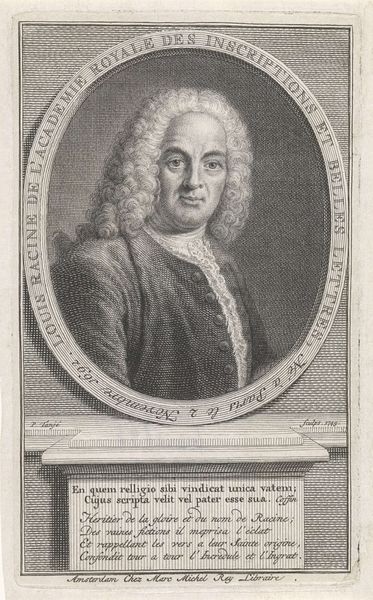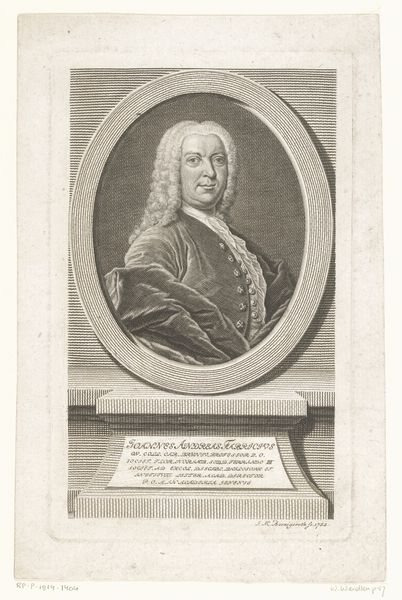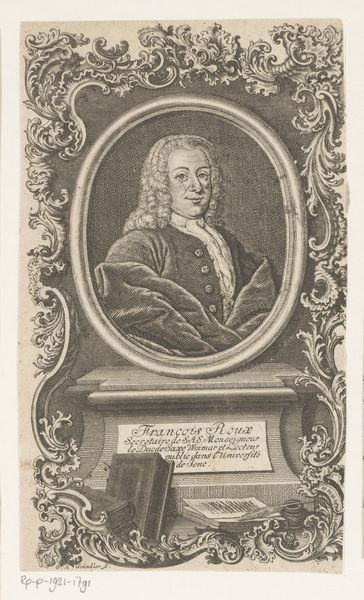
print, engraving
#
portrait
#
baroque
# print
#
history-painting
#
engraving
Dimensions: height 156 mm, width 96 mm
Copyright: Rijks Museum: Open Domain
Editor: This is a rather formal depiction titled "Portret van Friedrich Menz" from 1735, made by Johann Martin Bernigeroth. It’s an engraving, giving it this finely detailed, almost ethereal quality. There's such precision in the lines. How does a piece like this, produced through a repeatable process, reflect its time? Curator: I see here a fascinating intersection of portraiture, printmaking, and the social standing of the sitter. Notice the *engraving*, the artist utilized a specific skill and labor-intensive method, replicating an image for broader circulation, for consumption. What does this say about Friedrich Menz and the rising importance of disseminating knowledge and promoting the individual in 18th-century society? Editor: That's a good point! It makes me wonder about the materials used and the labor involved. Creating the plate, pulling the prints… Was this intended for mass consumption, or a more exclusive audience? Curator: Exactly. Think about the paper, the ink, and the engraver’s tools. These all carry material and symbolic weight. Also, this image would likely be produced within a print shop setting. Now how did the artist’s role relate to workshop culture, the commercial demands of the time and its patron class, and the larger networks of knowledge sharing? Was this image produced primarily to secure status through visibility? Editor: So, it’s not just about the subject of the portrait, but about the whole network of production and consumption around it. Fascinating. Curator: Precisely. It challenges the traditional hierarchy of art. Considering it as a crafted object produced for a specific social purpose, rather than purely aesthetic. Editor: I never considered prints quite this way, but seeing it as a form of material culture really broadens my understanding. Thank you. Curator: Likewise. It's crucial to look at art through the lens of its creation, labor and socio-economic implications.
Comments
No comments
Be the first to comment and join the conversation on the ultimate creative platform.
